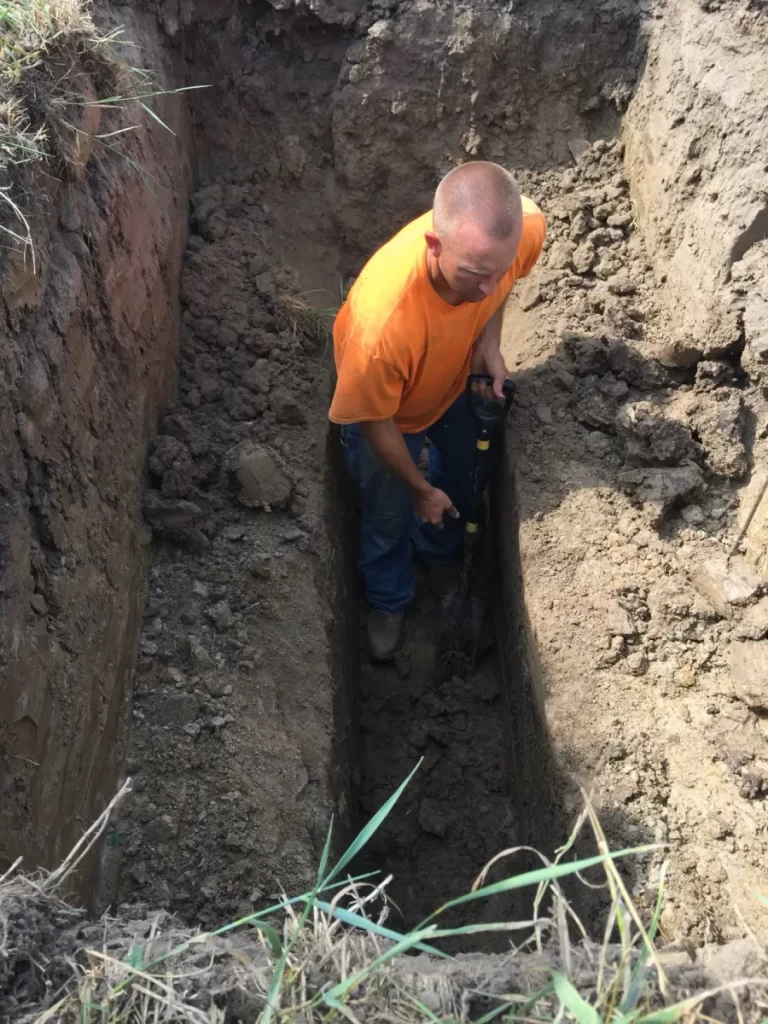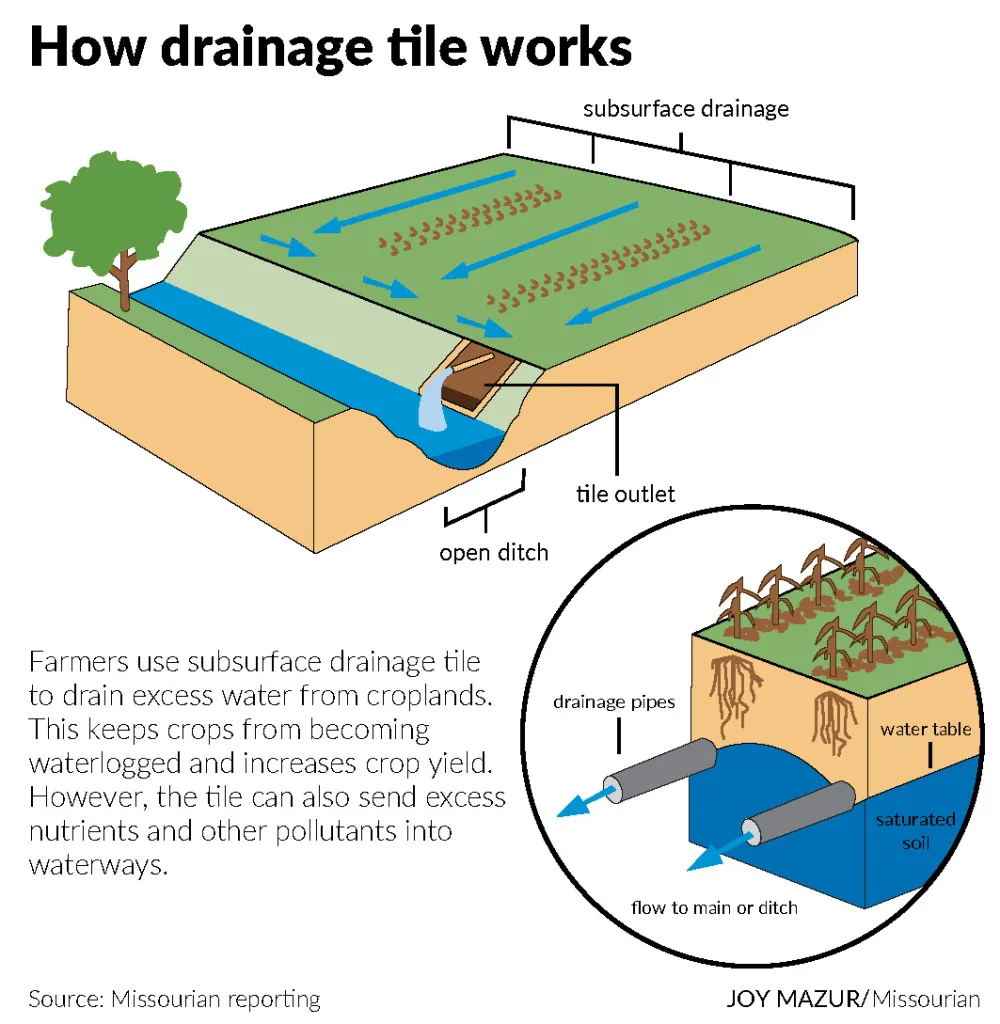Farm to Trouble, Part 5 of 5 — “We should have a sense of urgency”: Drainage tile drives nutrient pollution
This story is the fifth in a five-part series being shared by MSSC with permission called “Farm to Trouble,” a collaborative investigative reporting effort led by AG & Water Desk. The series takes a deep dive into the slow progress to reduce the polluted runoff from agriculture and other industries into the Mississippi River. This runoff from 31 states flows into the Gulf of Mexico and has created a “dead zone” off of Louisiana’s western coast and threatens to make the Mississippi Sound a dead zone in the future.
By Joy Mazur, Columbia Missourian, June 18, 2024

LIVINGSTON COUNTY, Mo. — An increased use of agricultural drainage tile is one reason a 2025 deadline to reduce nitrate and phosphorus entering the Gulf of Mexico by 20% is unlikely.
Drainage tile, a system farmers use to drain water from croplands, is also a contributor to the historic loss of up to about 100 million acres of wetlands in the U.S., researchers say.
This hidden underground pipe system stretches over more than 50 million acres in the U.S., with about 84% of those acres in the upper Midwest. It has become essential to modern agriculture, but it brings devastating environmental consequences.
About 98% of drainage tile in the nation is located in watersheds with excess nitrate and phosphorus levels. Tile changes the natural movement of water, serving as a conduit for pollution that is flushed quickly into nearby waterways.
Drainage tile is the “main delivery mechanism for nitrates from farm fields to the stream network,” said Chris Jones, a retired hydrologist from the University of Iowa.
Before tiles existed, a raindrop might take decades to reach a stream network, Jones said. “Now it’s hours or days.”
And researchers and agriculture industry experts say the problem is only getting worse. As climate change drives wetter weather in the Midwest and farmers push for greater productivity, many observers agree that drainage tile use is increasing.
Yet in many states, tile goes unmonitored and unregulated. Since tiles are considered a nonpoint source of pollution, which comes from places like farms where water isn’t tested, they also fall outside the reach of the Clean Water Act.
‘Bottom line is we have to make money’
 For many farmers, the math is simple. Tile costs about $1,850 to $3,700 per acre, an up-front investment that can increase annual crop yields by 5% to 25%.
For many farmers, the math is simple. Tile costs about $1,850 to $3,700 per acre, an up-front investment that can increase annual crop yields by 5% to 25%.
Tile installers bury a system of connected drain pipes under farm fields to transport water to an outlet or ditch. The drains suck excess water out of the soil, giving plants room to breathe and allowing farmers to work their fields sooner.
Harold Beach, a farmer in Taylor Township, Missouri, said tile significantly improved his fields and his yields. In a recent video, he and his son, Chris, can be seen driving a tractor that pulls a tile plow along a trench in the middle of a field, feeding long stretches of black pipe into dry soil.
Beach said he does worry about nutrient pollution. But he also feels pressure to successfully maintain his farm, which has been in the family for decades.
“Bottom line is we have to make money to stay here,” he said. “I’ve got past generations looking down thinking, ‘You better do it right.’”
“Farm to Trouble” Credits:
Contributing reporters & news outlets: Erin Jordan, The Gazette (Iowa); Delaney Dryfoos, The Lens (New Orleans); Madeline Heim, Milwaukee Journal Sentinel; Bennet Goldstein, Wisconsin Watch; Eric Schmid, St. Louis Public Radio; Joy Mazur, Columbia Missourian (Missouri); and Connor Giffin, Louisville Courier Journal (Kentucky).
Lead editors: Tegan Wendland, Ag & Water Desk; Erin Jordan, The Gazette; Kelly McEvers, host of NPR’s Embedded podcast
Data visualizations: Jared Whalen, data journalist, Ag & Water Desk
The Ag & Water Desk receives major funding from the Walton Family Foundation, which also funds many organizations within our region. The Desk retains full editorial independence. Please contact info@agwaterdesk.org with any questions.
Organizations referenced in this series that have also received Walton funding: Ducks Unlimited, Tulane University, Gulf Restoration Network, The Nature Conservancy, Louisiana Department of Agriculture and Forestry, University of Iowa, University of Minnesota, Minnesota Center for Environmental Advocacy, Iowa Environmental Council, Practical Farmers of Iowa, Precision Conservation Management, and Lighthawk.